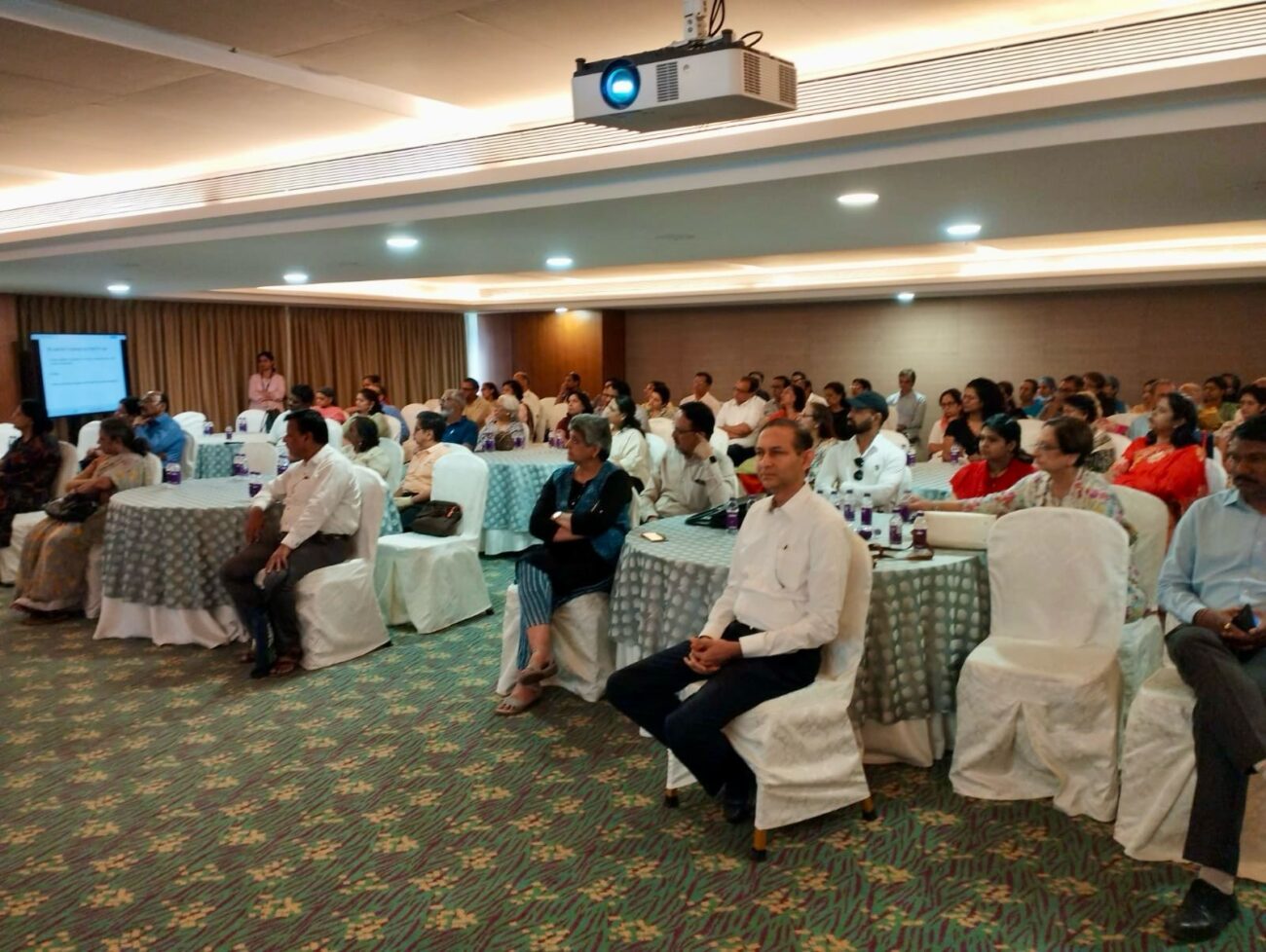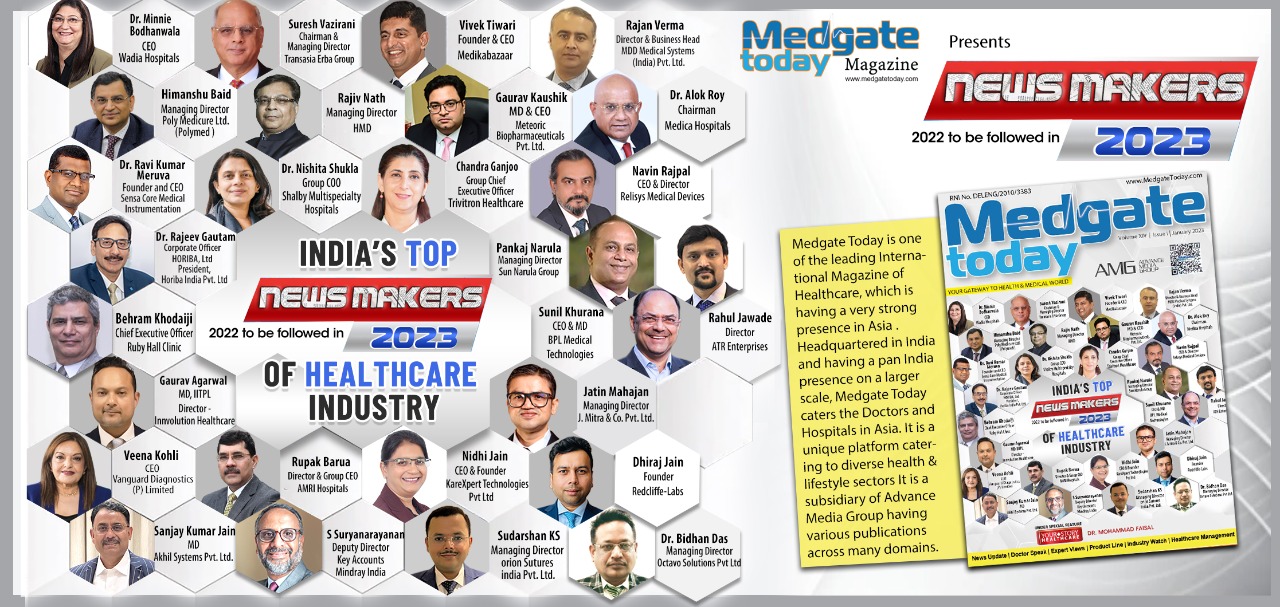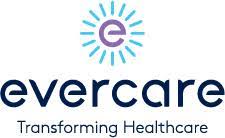Harmonisation and Standardization of Laboratory Testing is the Need of the Hour
Dr Barnali has come a longway but she is still so full of dreams and aspirations for the future.“If you put passion and dedication in your work, it will give meaning to your life,” she
Dr Barnali has come a longway but she is still so full of dreams and aspirations for the future.“If you put passion and dedication in your work, it will give meaning to your life,” she philosophizes.
Dr.Barnali Das, MD, DNB & PGDHHM, Consultant – Laboratory Medicine at KokilabenDhirubhaiAmbaniHospital & Medical Research Institute, Mumbai, is the lady who plays multiple roles throughout her professional and academic life. She is the Chair of American Association of Clinical Chemistry, India Division; Executive Committee Member of Scientific Division of International Federation of Clinical Chemistry & Laboratory Medicine (IFCC); and College of American Pathologist (CAP) Inspector & NABL Assessor. She also served as a Member of the IFCC Committee for Standardization of Thyroid Function Tests (IFCC S-CTFT), 2011-2017. She is also a Corresponding Member, IFCC Committee for Reference Interval & Decision Limit.
This year, Dr.Barnali is recipient of 2019 “Diagnostic Leadership Award in Achiever Category” from Indian Express Group, Medgate Today India 2019 “ Healthcare Leader in Quality & Management” in Voice of Healthcare and 2019 Zee Business National Healthcare Leadership Award in ‘Woman Leadership Category’.
She is also recipient of several prestigious international and national awards including two oration awards and awards from College of American Pathologist (CAP Inspector Excellence Honor for the year 2018), AACC (Outstanding Speaker Award), IFCC (Development of Quality Competence in Medical Laboratories Award), Asia Pacific Foundation of Clinical Biochemistry (APFCB), Reliance Group CSR (The Woman of Substance Award), and AMBI & ACBI.
She has many publications in high impact factor international& national journals (recent ones are Clinical Chemistry, European Thyroid Journal, Clinical Biochemistry etc.). She is organising secretary of 2 international conclave (IFCC & AACC) and many national conferences & CMEs.
She has also delivered more than hundred invited talks & plenary lectures in both national & international forums.
Her biography has been featured in a book (2018) named “And So Can You”, which contains stories of 17 renowned doctors in India.
As a prominent professional in Laboratory Medicine, what are the major challenges in the field of Clinical Chemistry & Immunoassay?
Dr. Barnali: Clinical Chemistry and Immunoassay tests form a very important set of tests in a pathology laboratory; a tool that clinicians and patients alike depend on, to pin down the symptoms for treatment and relief.
However, it is this very set of tests that have come in question. First, what
is the normal and acceptable range (upper & lower limits) of different Clinical
Chemistry and Immunoassay biomarkers in a particular population, has been
debated in different scientific fora. This is because, the level of markers can
change in relation to other biochemicals, biomolecules and hormones, which
themselves vary considerably with race, gender, age, different physiological
conditions (like pregnancy, new-born) and other illnesses & interfering
substances. This variation can be to such an extent that, each individual may
seem to have their own set-point of these hormones, as an example, for that of
thyroid stimulating hormone (TSH).
Therefore, harmonization of procedures is the need of the hour, since a major problem doctors and technicians have to grapple with is the variability of test-results; even a broadly similar set of instruments and methods can provide different results, even as much as 40% more or less, for example, in case of TSH values. It is then a real challenge to the physician to decide whether the patient is suffering from a disease or is it something else, since other factors can also cause changes in testlevels.
Due to the lack of proper reference intervals and sometimes due to standardized measurement procedures, standardization and harmonization of clinical chemistry and immunoassay testing still remains a formidable challenge
Have you done anything to establish Reference interval to address the above challenges?
Dr. Barnali: We have done reference interval verification study for most of the clinical chemistry & immunoassay tests. I would like to give you an example of one of most common routine test, TSH. Ethnicity-specific cut off of TSH is important for accurate test reports. I am also the Corresponding Member, IFCC Committee for Reference Interval & Decision Limit (IFCC C-RIDL) and was associated with IFCC Committee on Standardisation and Harmonisation of Thyroid Functions Tests (C-STFT). In India, we started by organising thyroid camps and every year around 1000 TSH screenings were done during World Thyroid Day. We have established reference interval for TSH and FT4 in Indian population.
The reference interval (90% confidence interval) for TSH by non-parametric procedure (bootstrap) is 0.48-4.52, and by parametric one (after transformation of the data), it is 0.45-4.27 for the adult population, which is little different from the manufacturer’s guidelines.
You were a part of Executive Committee of IFCC Scientific Division worldwide and also Chair of AACC India Section. Can you share us the experience?
Dr. Barnali: Being Executive Committee Member of IFCC (International Federation of Clinical Chemistry and Laboratory Medicine) Scientific division and Chair of AACC (American Association for Clinical Chemistry) India section, I feel that I have a bigger role to play, so as to incorporate quality competence in health care, implementation of standardization and harmonisation of laboratory testing, establishing Indian Reference Interval, bridging the gap between diagnosticians and clinicians & also to connect with the professionals in clinical chemistry, pathology, molecular diagnostics and IVD industry.
Different Committees and Working Groups under Scientific Division of International Federation of Clinical Chemistry & Laboratory Medicine (IFCC) has been formed to address the issues of standardization and Harmonisation of laboratory testing. Being a part of the Executive Member of IFCC Scientific Division, we have been entrusted with the responsibility to spread awareness on the need and methods of standardization all around the globe. IFCC is encouraging a lot of awareness-channels – organizing events, research publications and news articles. The committee is discussing with IVD industry, kit manufacturers, clinicians, hospitals and laboratories to formulate guidelines for assisting in correct measurement, diagnosis and management of diseases. My special thanks to IFCC Scientific Division Executive Committee for their continuous support.
It is a great honour to serve as the 1st chair of the AACC India Section. Its objective is to connect with global leaders in clinical chemistry, molecular diagnostics, mass spectrometry, translational medicine, laboratory management and other frontier areas of laboratory medicine.
In pursuit of that, our activities have been:
i) 30 AACC trainee membership grant to post graduates in India
ii) Organization of symposiums, CME and Annual Meeting in different parts of India.
As Chair of AACC India section, I believe I have significant role to play to empower young post graduate of our field. We are soliciting launching AACC India section travel grant of amount one lakh INR to attend AACC Annual Meeting in Chicago in 2020 for young post graduate student in the field. In addition, our section is introducing one AACC India Section Fellowship Training (one lakh INR) and two Educational Grant (50,000 INR each) for training and project, based on an Indian perspective. We are also planning for Universal Sample Banking study as per AACC model in India for establishing Indian Reference Interval. With our distinguished executive committee members, we expect another great year for our section and our valued members.
Can you please elaborate the above points with examples?
Dr. Barnali: Sure. Here, I will provide few examples and technical solutions to address laboratory challenges and to take it forward from both Clinical Chemistry as well as Immunoassay platforms.
i) There has been a continuous challenge in the health care system in U.S, Europe and other countries to standardize and harmonize the HbA1c reporting: the decision on what to report in NGSP (%) and/or IFCC (mmol/mol) units along with eAG (in either mmol/L or mg/dL). This globalization places a responsibility on laboratory medicine specialists to work together to reduce the current variability in patient results, which arise from differences between units, methods and laboratory practices in different countries.
The IFCC method is in place and opens up the perspective of a global standardization (with worldwide uniform clinical guidelines), with HbA1c reflecting the true estimated average glucose.
Due to the standardization efforts of IFCC, NGSP and other national organisations, and also due to ongoing efforts of manufacturers and laboratories, the quality of HbA1c reporting has increased dramatically. It is so much so that, there has been a paradigm shift: HbA1c is now considered the gold standard, not only for monitoring, but also for diagnosis of diabetes.
ii) Cardiovascular diseases (CVD) still remains the primary cause of death worldwide as well as in India regardless of advances in diagnosis, treatment and risk assessment tools. Chest pain is one of the most common reasons for people visiting the accident and emergency department(A&E) in hospitals to rule out an acute coronary syndrome (ACS).
Troponin measurement, a keystone in the diagnosis and management of ACS detects the levels of troponin- a cardiac-specific structural protein released by damaged heart muscles. We have now shifted from conventional cardiac troponin (cTn) assays to High-sensitivity cardiac troponin (hs-cTn) I or T. High sensitive Troponin assay help in higher analytic precision at lower concentrations, and increased clinical sensitivity for Acute coronary syndrome (ACS). It can detect even small changes in troponin concentration (delta changes: increase or decrease)in particular time frame. The availability of high-sensitivity cardiac troponin assays (hs-cTnI or T)in the setting of Acute Coronary Syndrome (ACS) has allowed for rapid risk assessment of an ongoing myocardial infarction.
However, there were concerns raised about the use of single, universal cut-off value of hsTroponin I for both men and women, as there is a potential risk of under-diagnosis in women, since they have a lower threshold value of troponin. A total of 2797 female patients were enrolled. Percentage of positive female patients with acute cardiac events if the cut-off was more than 26.2 was 68%. Percentage of positive female patients with acute cardiac events if the cut-off was more than 15.6 was 82%. The difference in females undetected without gender specific cut-off was 14%.
Therefore, implementation of gender-specific diagnostic threshold helped in identifying more women at increased risk of ACS or death, than a generic threshold.
I would also like to acknowledge my team members for helping out
in conducting few of the above studies, specially the technical staff of
Biochemistry & immunology section.
What is your final message?
Dr. Barnali: The road map for laboratory medicine therefore will involve strategies for harmonizing, communicating and integrating with all stakeholders; like, clinicians, diagnosticians and IVD industry, in order to formulate guidelines for assisting in correct measurement, diagnosis and management of diseases.





